A Philadelphian Printemps
Dear Jimmy,
In our recent conversation you had expressed some impatience for spring to jump into action since the maritime climate usually means temperatures slower to warm, while moderating them. Each year I am always anxious to see how winter transitions to spring because it is a rare year when I experience a seamless change. While the mild winter was a welcome change from the last two years' unforgiving winters, it caused me some concern about how some plants may been cajoled prematurely from dormancy, risking their tender shoots or flowers to sudden cold snaps. Snow in April has happened before, and early spring frosts have despoiled early spring displays of magnolias and cherries. A summery spell in mid-March this year awakened some bulbs, perennials, and woody plants foolish enough to respond in turn, and two weeks later a frigid cold snap curtailed what would have been a spectacular show from some magnolias and spring Asian perennials like epimediums. At the same time, we were able to see how cold resilient the plants were - unsurprisingly the spring ephemerals and bulbs did not flinch at all, save for limp leaves that perked up with warmer temperatures during the day. There isn't much one can do in the face of seemingly cataclysmic events - instead one just accepts the havoc with quiet resignation and move forward to what the remainder of season will send our way. My intervention was draping my fig tree with swathes of fabric to mitigate the cold from damaging the emerging shoots - two figless summers had me unwilling to experience a third figless summer.
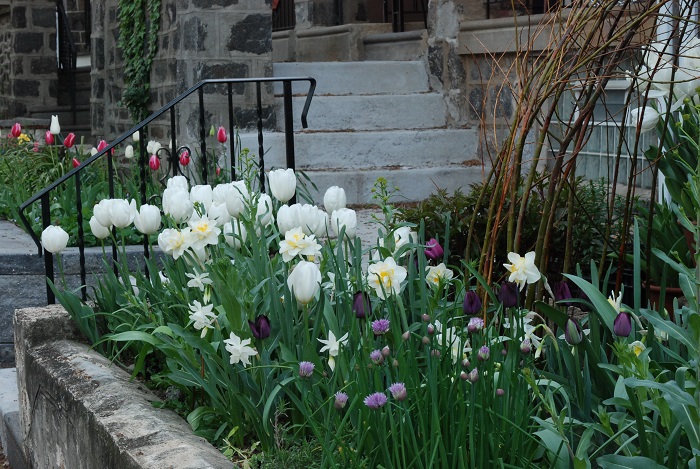
On one hand, the cold nights kept my tulips on a slow waltz - only a day or two of 80 F is enough to send tulips into early overdrive, crinkling their petals and shattering them the next day - they had budded and turned color, and maintained that status for a good two weeks until consistent warmth swelled their buds without warning. After a mosaic-like grids of different tulips last year, I opted for a simpler scheme of white tulips sprinkled with some dark purple ones for contrast. Keeping tulips to a minimum of 1 to 3 varieties prevents the effect from becoming too Easter-egg like, a chromatic chaos disjointed visually. Tulipa 'Hakuun' was and is a winner in my black book of top notch plants- the slightly upright foliage does have the floppy gait of some Darwin tulips, the buds taper elegantly like the closed beaks of well-fed birds, and are flushed with a pale wash of celadon, and the ovoid flowers have a pure crystalline color untainted by cream or yellow. The Japanese who bred this tulip for their cut-flower trade obviously knew what they were doing.
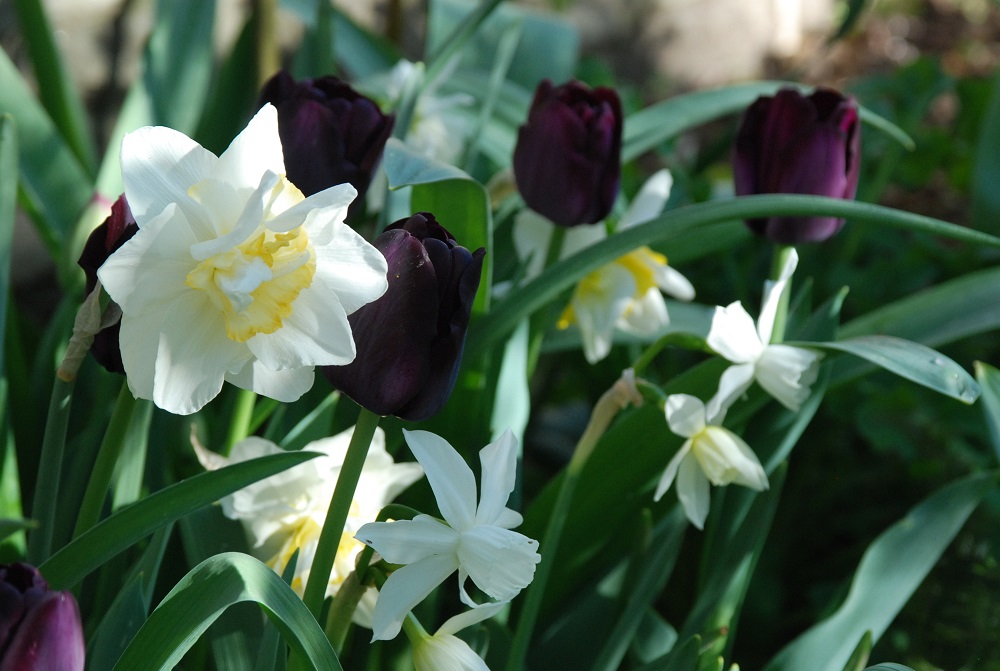
Tulipa 'Continental' is peppered throughout T. 'Hakuun' and the white daffodils, giving a depth that prevents the white scheme from being too 'safe'. The touches of yellow in Narcissus 'Manly' emulate sparks of light, injecting warmth, and similarly the emerging inflorescences of the biennial Isatis tinctoria takes the same color to a different height.
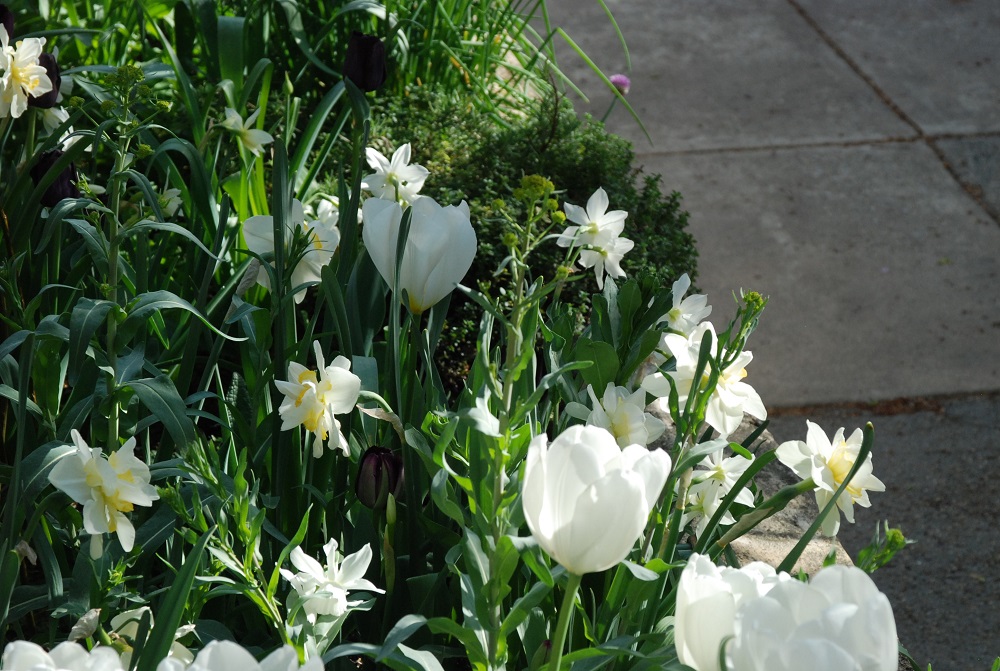
I like the Viridiflora type tulips but their late flowering tends to occur with those heat waves that hasten the display. I always stop to take notes of tulips I admire here and there, and place my orders in late summer. For new varieties, I grow them in pots for closer observation. One such pot contains Tulipa 'Night Rider', a Viridiflora type mauve streaked with green. The bulbs had been bought in the clearance rack at Home Depot early December.
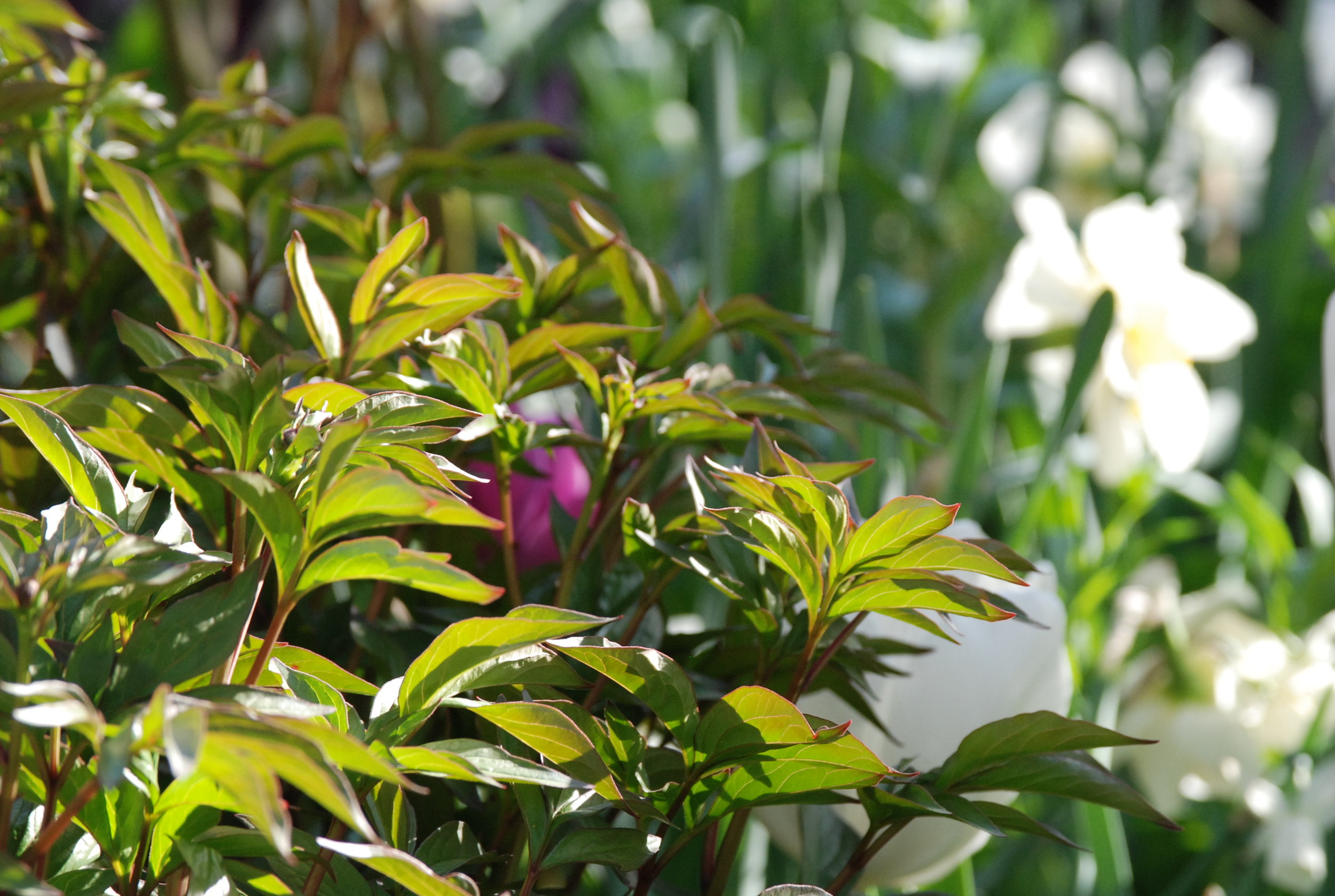
The sole peony I inherited from the previous owners have surprised me with its shade tolerance during summer, and its reliable blooms. Earlier the new growth was a vibrant red, a burnished tone that proved to a good foil for the cool icy whites and greens. I nearly removed it last year, but its fortitude last summer won me. The foliage gets powdery mildew, and I usually cut it down.
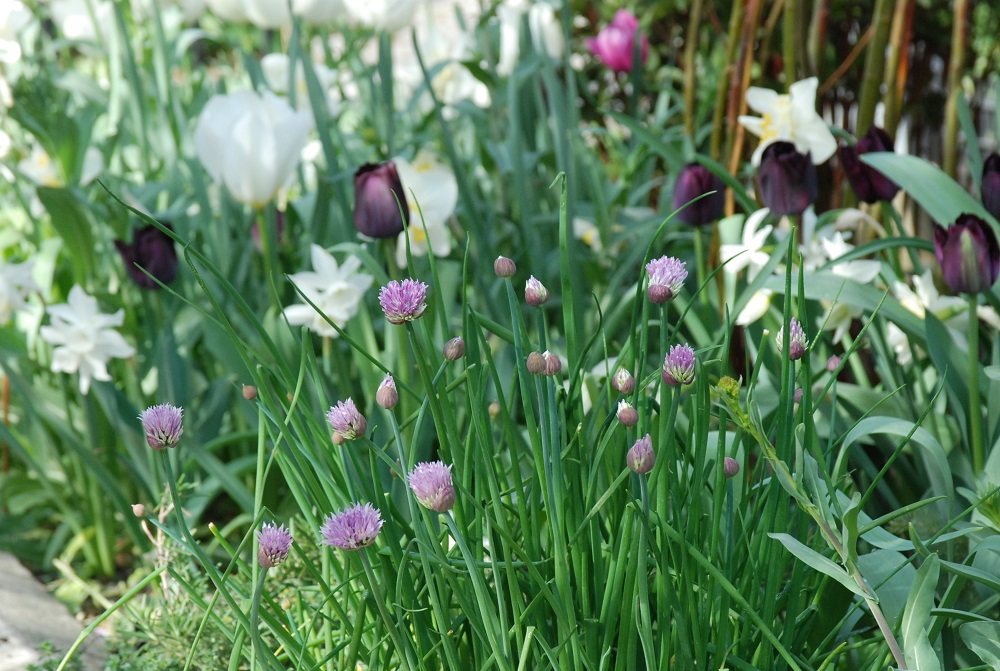
My garden would feel bereft without alliums, which takes over the show after the tulips and daffodils. Allium schoenoprasum or chives surprised me with its precocious flowering, and its soft mauve color harmonized well with the bulbs. I plan on harvesting a few blossoms to garnish salads, and use the leaves for scrambled eggs. Allium 'Purple Sensation' and Allium 'Mt. Everest' have yet to flower, although I hope that they coincide with woad and poppies (Papaver rhoeas and P. commutatum). I should have started borage for their blue flowers since the primary color mix of red poppies and yellow woad could be stronger with blue. However, it has been exciting to see small rosettes planted last December literally galloping away into full growth and soon flowering.
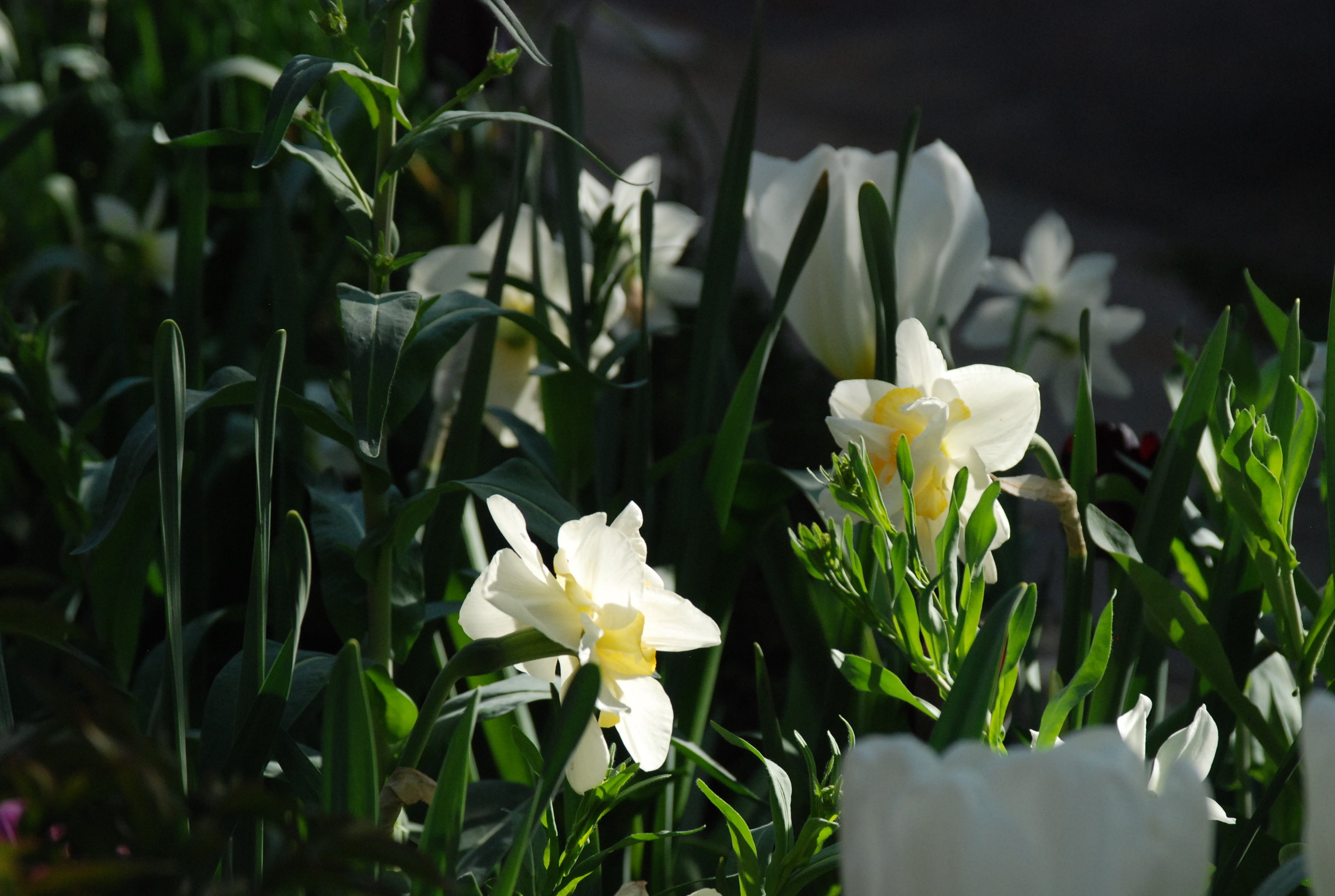
The cool colors are intentional as I only enjoy my garden very early in the morning or later in the evening. As the sun begins to fade behind the row houses, the garden takes on an incandescent aura.
As some supermarkets and home-improvement stores roll out racks of warm season annuals and vegetables too early to be planted outside (I'm always incredulous at how people allow a few warm days and the haze of spring fever delude themselves into planting these heat lovers too early), I'm sketching mentally a shortlist of annuals and tender perennials to take over after the early summer flush. Last summer, I struggled to keep the momentum I had from spring and early summer in my terrace garden. We have had a dry and hot summer, which meant shriveled plants and terrible mite infestations that ruined my cosmos and dahlias. I decided that I don't have enough sun to grow composites well, and will revise my summer planting this year. It didn't help that I was often on the road last year, nationally and internationally. It's the promise of starting afresh each year that keeps gardening a beautiful and positive endeavor.
Best,
Eric






